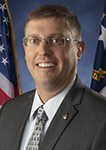This is an article by Greg Hauser, an Article Out Loud from Domestic Preparedness, April 30, 2025.
Hurricanes in 2024 caused widespread damage to infrastructure, leading to a critical but often overlooked issue: isolation. Physical and technological disruptions left public safety personnel and government officials unable to perform essential tasks. While physical destruction was visible, the invisible breakdown of communication systems intensified the sense of isolation and fear among officials and the public.
Learn how SWICs and emergency managers can implement plans to address these unique challenges to prepare for the next disaster.

Greg Hauser
Greg Hauser joined the North Carolina Division of Emergency Management (NCEM) in 2018 as the statewide interoperability coordinator (SWIC) and leader of Emergency Support Function 2 activities. Before joining NCEM, Greg spent 17 years as a telecommunicator and search and rescue communications specialist for the Charlotte Fire Department. He serves as the vice chair of the National Council of SWICs. Throughout his career, he has led first responder communications efforts for numerous large-scale incidents and events, including the 2012 Democratic National Convention, Hurricane Irene, and Hurricane Matthew. Most recently, he led North Carolina’s first responder communications response and recovery efforts for hurricanes Helene, Florence, and Dorian and served as an advisor to the coordination efforts for the 2016 and 2020 Republican National Conventions. Greg is originally from Becket, Massachusetts, and attended the University of New Haven (Connecticut), where he earned a bachelor’s degree in Fire Investigation and Fire Administration. He also completed UNC-Chapel Hill’s Community Preparedness and Disaster Management master’s program.
- Greg Hauserhttps://www.domesticpreparedness.com/author/greg-hauser








